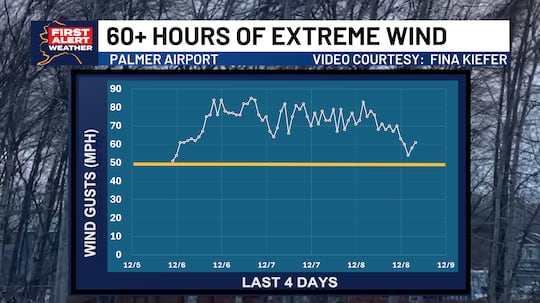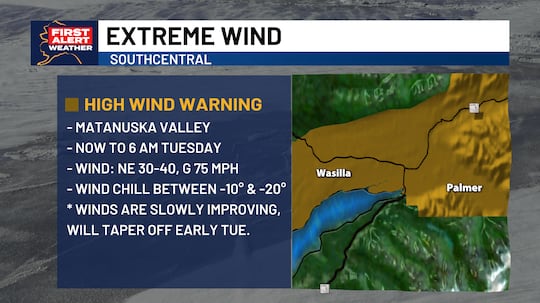To obtain change without changing is impossible.
For years, we’ve heard from Alaskans that health care costs need to change. They are too high. Nothing is being done about it. No one can stop this pricing spiral.
According to the Health Care Cost Institute (HCCI) June 2023 report, Anchorage ranks third in the nation for health care costs, with prices similar to those found in San Francisco.
The repeal of the 80th percentile rule, which took effect on Jan. 1, 2024, is the type of change that can make a real impact on those high costs. The 80th percentile rule is intended to protect patients from surprise billing, which occurs when medical providers bill a patient for the difference between the amount they charge and the amount that the patient’s insurance pays.
When the 80th percentile rule was established in 2004, it stipulated that health plans must pay at the eighth highest rate out of 10 rates submitted, or billed charges if lower than the eighth highest rate. The higher the bill is, the higher the amount a health care provider is paid.
While the 80th percentile rule served its purpose in protecting consumers from surprise billing, it also meant providers could artificially inflate their rates in an endless chase to the top.
This is because there are no regulations that govern or place caps on what providers can submit to health plans for payment. Insurers like Premera were required to pay the 8th highest rate to non-contracted providers. So why, as a health care provider, would you contract with a health plan at all if you could handpick your reimbursement rate? For you, the sky’s the limit.
Now, I spent many years managing underwriting teams — the teams responsible for the complex calculations that determine insurance rates — so I’m a numbers guy. And what I can tell you is the numbers under the 80th percentile rule simply aren’t sustainable.
One way we can measure the increase in cost is by using medical cost trends. Medical cost trend is how much we anticipate treatment costs will grow year-over-year and is one of the factors we use to set premiums. Our data shows the average medical service cost trend in Alaska for out-of-network providers under the 80th percentile is 4%, while it’s 1.8% for in-network contracted services.
When we look at our 2022 claims data, I’m shocked. Why should something like a mammogram cost $1,200 out of network in Alaska, but only $105 out of network in Washington? This is standard preventive care. Why should a COVID-19 antigen test come in at $139 out of network in Alaska but only $40 out of network in Washington? This is a simple, quick test.
The cost of living in Alaska is high, but to me, that seems preposterous. There is no regulation, ruling or governing body keeping health care costs in check. On the flip side, health plan rates are developed with both federal and Alaska Division of Insurance oversight.
Without the inflationary impacts of the 80th percentile rule, Premera:
• Filed a 2.5% reduction for 2024 employer premium rates
• Worked with the Division of Insurance to establish new reimbursement rates for out-of-network providers at 185% of Medicare
• Committed to maintain all current in-network provider contracts until 2025
But since the repeal was announced, we’ve heard from providers across the state who claim this will result in such a drastic pay cut for them that they won’t be able to stay in business.
Let’s take a look at the numbers in a story we’ve heard several times in the news. One registered nurse says with the repeal of the 80th percentile rule, she will take a 70% pay cut. What that math tells us is that before the repeal, she was being paid at a rate that is at least 600% of Medicaid. Why should providers like that keep fattening their pocketbooks while Alaskans bear the brunt of their exorbitant costs?
We’ve also heard that patients are going to end up being hit with surprise bills from out-of-network providers. We contract with more than 80% of providers in Alaska to ensure our members have a robust list of in-network quality providers to choose from. We’re working hard to reach agreements with the remaining out-of-network providers so they can be paid at a rate higher than 185% of Medicare and our members are protected from high costs.
You may be wondering what happens with those savings. It will go right back to our members and customers. Insurers are legally required to spend at least 80% of premiums on the cost of care for our members, so if prices drop, our members will see relief.
We understand there is a delicate balance between controlling costs for our members and ensuring providers are appropriately compensated. We don’t benefit from “chasing” health care providers out of Alaska by negotiating low reimbursement rates. Without a strong network of providers, we’re unable to offer our members our core service – providing access to quality care.
All of this again boils down to change. The status quo was simply not sustainable and required a major change for Alaskans to start to see lower health care costs. But providers who are fighting the repeal don’t want to change. And why would they when, under the 80th percentile rule, they could essentially set their prices as high as they wanted?
The numbers just don’t add up.
Jim Grazko is the president of Premera Blue Cross Blue Shield of Alaska based in Anchorage. The company and its predecessors have operated in Alaska since 1952.
The views expressed here are the writer’s and are not necessarily endorsed by the Anchorage Daily News, which welcomes a broad range of viewpoints. To submit a piece for consideration, email commentary(at)adn.com. Send submissions shorter than 200 words to letters@adn.com or click here to submit via any web browser. Read our full guidelines for letters and commentaries here.

:quality(70)/cloudfront-us-east-1.images.arcpublishing.com/adn/U6A32VU4YVDNVEZMA57AK6GXQQ.jpg?ssl=1)



































